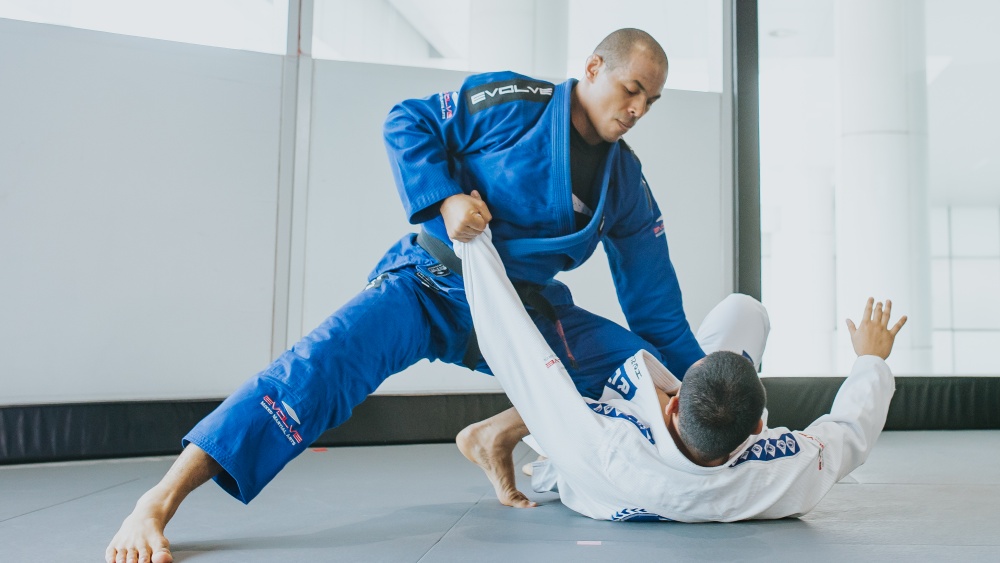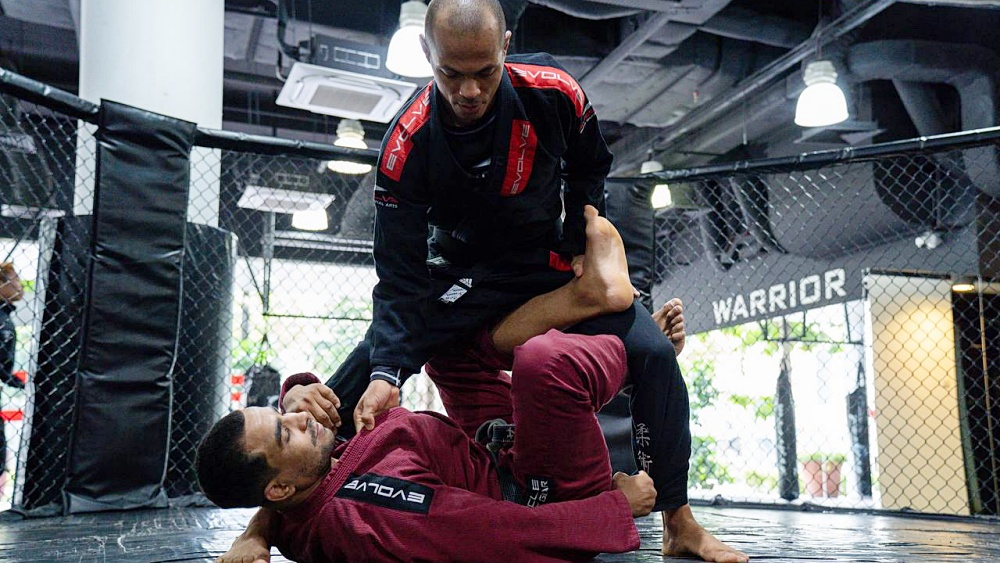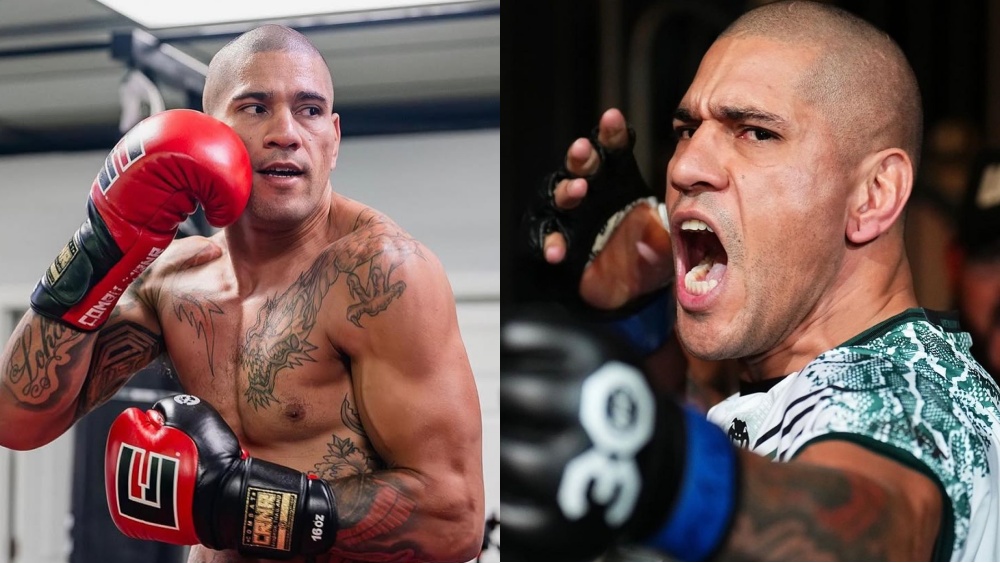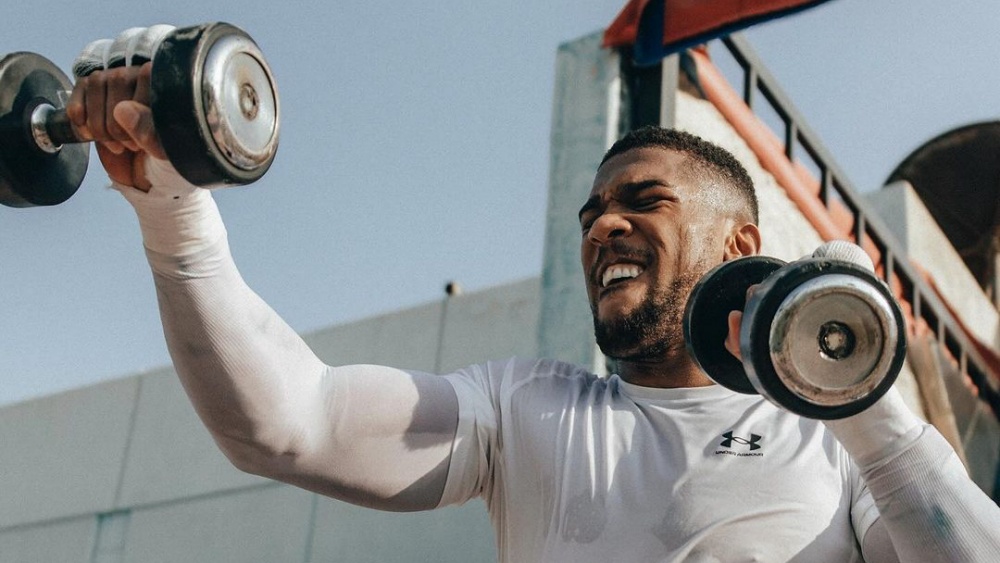Brazilian Jiu-Jitsu is a martial art often associated with ground fighting. This is true in many ways, as most of the time in BJJ is spent grappling on the mat. Utilizing proper footwork while standing up is an equally important (and often understudied) aspect that all BJJ practitioners should work on. Today, we will go over the basics of footwork in Jiu-Jitsu and drills to improve your movement on the mats.
Footwork In Grappling Martial Arts
Proper footwork can be the determining factor between maintaining a solid base and getting swept or submitted. In a combat sport as dynamic as BJJ, it is imperative to stay in the best possible position at all times; this includes your position whenever you move into offensive and defensive cycles.
The ability to move freely is a skill that will make anyone a better practitioner in any sport. In the context of BJJ, this means that you can effectively move in and out of the opponent’s threats and transition to positions where you can get the upper hand. Moves as simple as getting the collar tie require some level of understanding regarding footwork. You need to move in towards your opponent while minimizing their ability to attack as you go in. With this, having good footwork is vital to successfully implementing your techniques on the mats.
Footwork Solo Drills For Judo And BJJ
In this video, the SA Judo Academy YouTube channel shares 10 solo drills you can practice immediately. Solo drills are fantastic because they can be done practically anywhere; all you need is a relatively wide space and some tape to mark the floor.
The first drill is the single leg hop following the marks on the floor. This helps improve coordination and explosive strength, traits helpful in grappling.
The second drill is the shadow Uchikomi. Uchikomi (repetition training) is a classic training tool to develop technique and situational awareness. From the starting position, step one foot forward at an angle, and use the same foot to pivot and turn your body around. Repeat this multiple times on both sides.
The third drill is a more complicated version of the second drill. This time, you alternate your steps after completing a turn. This is an excellent drill for improving lateral mobility on both sides.
The fourth drill is the basic foot sweep drill. From the starting position, perform a backward step at an angle, and then use your other leg to sweep your imaginary opponent.
The fifth drill is another foot sweep drill, this time from a staggered stance. Step forward at an angle using your front leg as you trail with your back leg. The final step is to “lift” the opponent using your leg and hands.
The sixth drill is a foot sweep drill using the straight step. From the staggered stance, step directly forward and follow up with your back leg. Perform an inside sweep with your front leg by sweeping from the inside and going outwards.
The seventh drill is useful for throws like the Uchi Mata. From the staggered stance, perform a diagonal step with your front leg as you pull your imaginary opponent upwards. Next, step and plant your back leg near your starting position. From here, turn and lift with your leg to execute the Uchi Mata.
The eighth drill is useful for throws like the Tai Otoshi. From the staggered stance, step forward as you pull your opponent upwards. Perform a turning backstep with your trail leg, and swipe your front leg sideways to complete the drill.
The ninth drill is the turning squat for techniques like the Seoi Nage. Start by performing a squat with your weight placed on the balls of your feet. Jump and turn as you follow the straight line in front of you. Ensure that you keep your core braced as you perform this movement.
The last drill is the blocking throw drill. From the staggered stance, perform a front step at an angle, step your trail leg, and land on a straight line as your front leg as you lift and block the opponent’s leg.
Footwork Partner Drills For BJJ
In this video, black belt competitor Adam Wardziński demonstrates 5 footwork drills with a partner. You can use these drills to develop excellent footwork in conjunction with your regular training.
The first drill is the toreando guard pass from the open guard. Grab your training partner’s pants near the knee, push their legs to their chest, and perform a toreando pass going to knee on belly or side control. You can chain this drill by moving from one side to the other.
The second drill is similar to the first one, but you use only one hand to control the knee. Grab their pants near the knee with your same side arm, and clear it by pushing it at an angle as you move to the side.
The third drill is a guard passing drill if your training partner has both feet on the mat. Place one hand on their knee and the other on the mat near your partner’s leg. Pass the guard by doing a short hop while keeping your grips.
The fourth drill is the leg pummel to leg drag from the reverse De La Riva guard (RDLR). From the RDLR, grab your training partner’s pants near the knee, pummel your leg to the outside, and perform the leg drag while keeping your grips. This is a powerful counter to the pesky reverse De La Riva guard.
The last drill is the X Pass from the reverse De La Riva guard. If you cannot do the leg pummel to drag technique, doing this is an excellent alternative. From the RDLR, grab your training partner’s pants near the knee as you narrow your base. Perform an X Pass by lifting your leg up to bypass the guard as you move to the side.
Conclusion
Footwork is an integral but often forgotten component of Brazilian Jiu-Jitsu. You can enhance your overall BJJ skills by recognizing the importance of footwork and incorporating these specific drills into your daily training. Try them out, and let us know what you think!
You may also like:
















